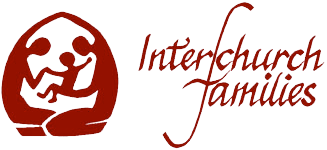Interchurch Families in Australia
Australian Interchurch Families were very pleased to welcome Ray Temmerman to many of our homes in February last. Ray probably has a better insight into the Australian Interchurch Families scene than any of the local families. In this vast country, the size of Europe, or U.S.A., or Canada there are few opportunities for interpersonal contact. E-Mail is one way to overcome this tyranny of distance. This report presents a view from only one window.
It is recognised that at least 50% of marriages in Australia are mixed (or interchurch). The 21st Century brings a newer phenomenon of an increase in interfaith marriages. Australia, with its population of 20 million is now a multi-cultural, pluralist society comparable to nowhere else in the world. Since World War II doors have been opened for people escaping regimes which deny freedom to ethnic and religious groups. Within Australian society today, Aboriginal spirituality dating back 40,000 years walks beside Hindus, Buddhists, Jews, Confucianism, Christians and Muslims, and all that lies between. Mosques, temples and shrines are part of the urban, and occasionally, the rural scene. Eastern, Russian and Greek Orthodox churches are to be found in the larger cities, as those who have migrated here retain and enshrine their religious identity. Our laws enfold non-discrimination in a huge country which imitates Palestine at the time of Jesus. The peaceful, tolerant yet independent personality of most Australians provides a setting where living in religious and ecumenical harmony is a reality for most of the population.
In this scene, an Anglo-Saxon nominally Christian society has been transformed to a secular society where the proportion of Christians is declining although the number of Christian denominations has increased dramatically. The NCCA (National Council of Churches in Australia) boasts fifteen mainstream members. Among the Christian population, over 30% are Roman Catholic, just under 30% are Anglican, while Uniting Church, Lutheran, Salvation Army, Orthodox, Baptist, Presbyterian and Evangelical Protestants have high community profiles and strong representation
The Australian Catholic Bishops’ Conference consists of thirty-eight dioceses but has not adopted a policy for sacramental sharing with other Christians. However, Guidelines for Sacramental Sharing have been published by the Archbishop of Brisbane (1993, Blessed and Broken), and the bishops of Broken Bay which is part of Sydney (1999, One Body Broken), of Rockhampton, in northern Queensland (1999, Guidelines for Sacramental Sharing) and of Maitland-Newcastle (2001, Real Yet Imperfect). This is as recommended in the Directory, (1993). Each of these small publications indicates when such sacramental sharing may be permissible and advisable. Interchurch Families merit special attention, as they do in the Directory. When the question arises, some other dioceses are known to refer to these documents for guidance.
A longer companion document was published in Maitland-Newcastle thanks to assistance from Fr Ernest Falardeau from the Archdiocese of Santa Fe. It traces the strong ecumenical history of the Maitland-Newcastle diocese and explains the changes to Canon Law in 1983 and subsequent norms from the Directory. Members of the Diocesan Ecumenical and Interfaith Commission present workshops to explore the provisions fully.
The workshops have proved an experience of deep healing for those who attend. Recognition that both the Catholic party, their spouse and family members, if they so desire and if they have Catholic faith in the Eucharist, may now receive on family occasions such as baptisms, first communion days, ordinations, marriages and funerals creates a pastoral empathy which fulfils the spirit of Pope John XXIII and Vatican II: Let there be unity in what is necessary, freedom in what is unsettled, and charity in any case.
Although over 50% of Roman Catholic marriages are mixed, few belong to existing Interchurch Family Groups where support for the possibilities of the presence of both clergy at baptisms, marriages and funerals can be found. It seems most couples who remain interchurch have worked out the individual course which they in conscience can steer through the complexities which arise. They quietly follow their own conscience. The fact that the Roman Catholic Church has become more pastorally sensitive to the need for sacramental sharing by the family is a plus. But the denial of the decision in conscience for Roman Catholics to receive sacraments in the denomination of their spouse, unless the minister is “validly” ordained, forms a barrier to openness. Quietly doing their own thing in conscience has become an alternative.
Interchurch families all welcome the Report of the National Dialogue between the Roman Catholic Church and the Uniting Church in Australia Interchurch Marriages – Their Ecumenical Challenge and Significance for Our Churches. It was endorsed by the Australian Catholic Bishops Conference and the UCA Assembly Standing Committee.
It states (p 22)
When couples from different Christian traditions are uncertain in which church they should be married, or in which church they should raise their children, they deserve to be received with compassion, because the fault is not theirs but the consequence of our division. The pain which this causes is not their fault, but that of our churches which have placed them in this situation.
It is a case not of the church having to forgive them, but of asking them to forgive the church. It is with this attitude that our churches should welcome candidates for marriage and, where appropriate, encourage- not impede- interchurch marriages.
The pain of separation is overarching and undeniable for interchurch partners and is etched deeply into their consciousness.
Although they may be able to receive the Eucharist together, the pain of this separation is always with them. These families hope that all clergy will make themselves aware of the true state of affairs which reflect signs of the times. The answer “No” is still being presented by clergy who have not made themselves aware of possibilities.
Our prayer is that in this young country of Australia, the Great South Land of the Holy Spirit, our multi-faith and multi-cultural society may light a path for the Old Worlds to follow.
Bev and Kevin Hincks, Newcastle, N.S.W. Australia

